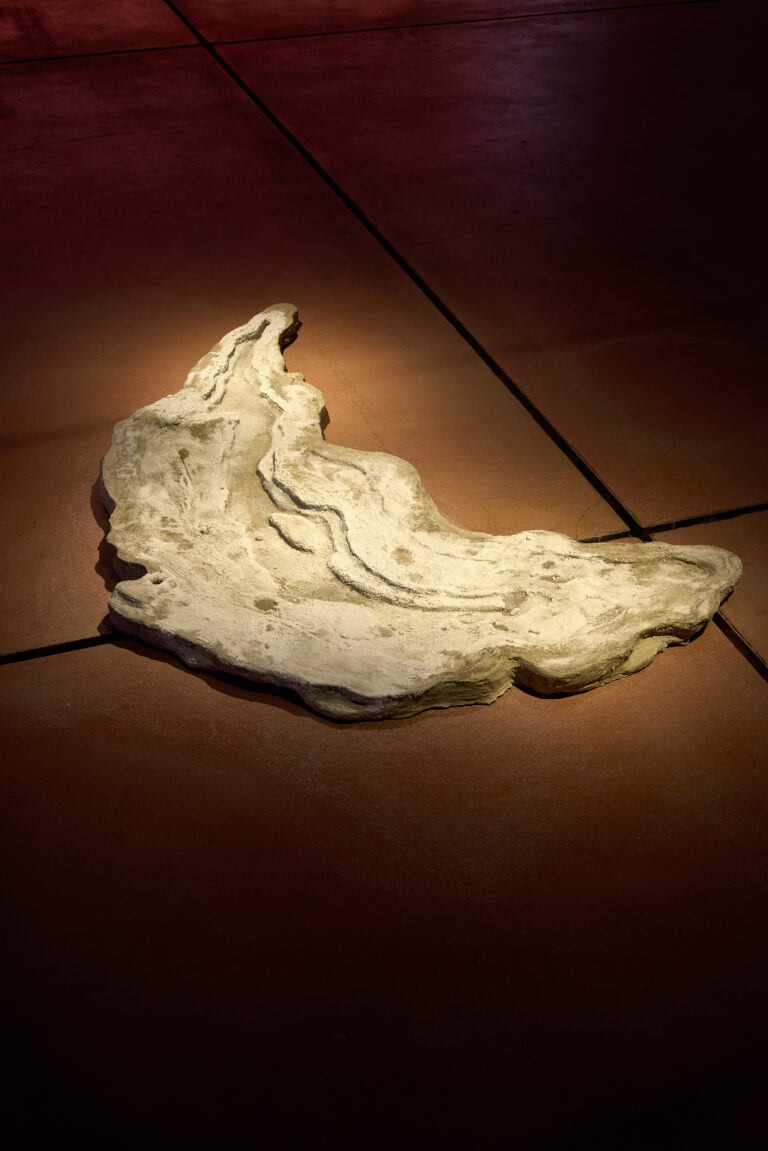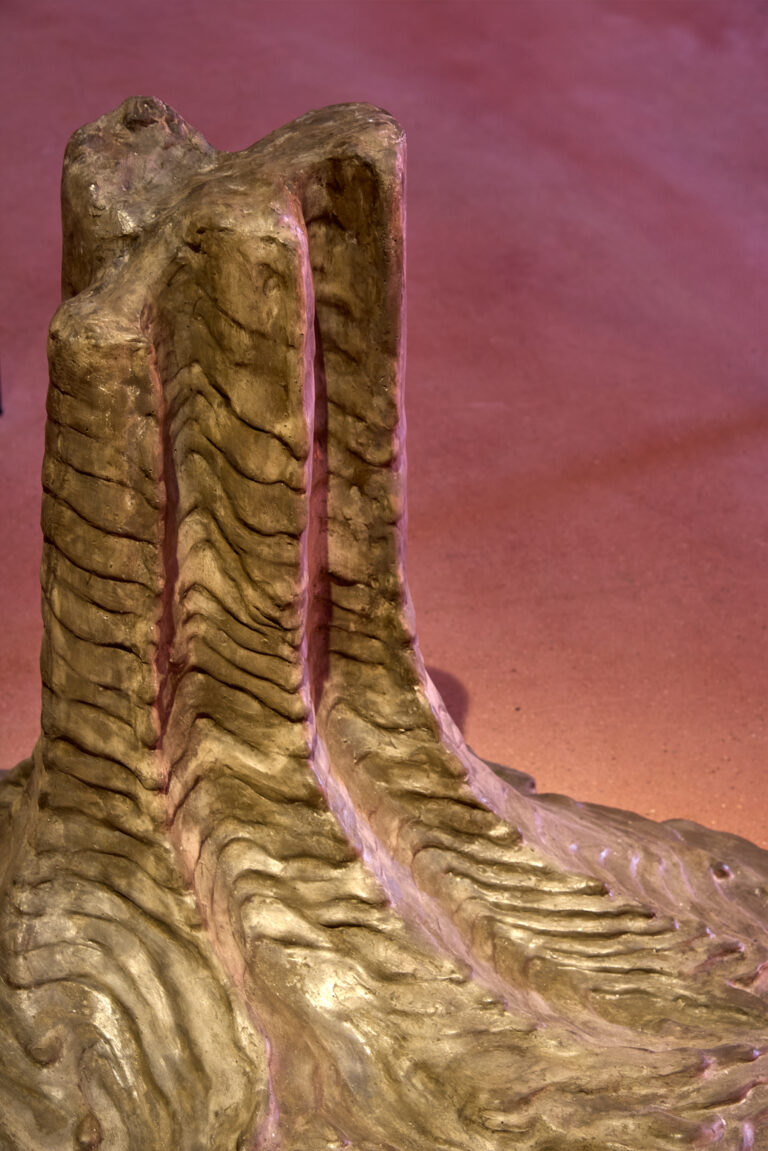III: Bodies of Dust
Group exhibition in the GAMPA gallery
curator: Šárka Koudelová
5 april – 23 May 2025
The metaphor of the human body as dust, clay, or sand, with all its biblical connotations, is as ancient as our cultural consciousness. Nevertheless, it appears that this physical sense of belonging together with all matter on Earth must be updated. We feel the need to redefine it, utilising shared experiences to transform societal perceptions of the human body and the influences inscribed in everything it receives and absorbs – elements that crystallise, metamorphose, and become synthetic parts of the body. The spectrum of colour found in ceramic clay parallels the range of colours of human skin and internal organs. While the clay is wet, it has a malleable, almost fluid form. If it is mishandled or subjected to rapid temperature; it cracks, without moisture, it becomes brittle and disintegrates into dust. Just like our vulnerable bodies, it is directly dependent on the proportion of chemical elements and water content. Just like our disintegrating and regenerating bodies, it is part of all earthly and cosmic matter. Thanks to airstreams, we sometimes inhale air from the Sahara as well as stardust. Stardust, after all, can be understood as a pervasive, magical element that, according to the hypothesis known as panspermia, may have brought life to our planet in the form of microorganisms wandering through the galaxy in the form of solid microparticles.
The realisation that both living and non-living matter on Earth and across the cosmos is shared is an appeal to empathise with extra-systemic identities and non-human bodies. Consequently, we perceive the gallery space, built from clay bricks, as an equal organism – a body we share with visitors, and which is, at the same time, ours. Just as the bodies of a mother and child are eternally linked by cells that migrated in both directions, our works form part of the gallery’s body, elevated to the status of organs, or, at times, acting as burdensome kidney or bladder stones.
It is easy to identify with the clay body of the gallery – much like us, it has a spine. That is the axis of the entire bodily space, enabling it to stand erect as well as curl up and rest. Muscles rest upon it and it determines the rhythm of the spacing of the other body parts, providing them with support and protection. Dust mingles within the safe space inside the ribcage.
Text: Šárka Koudelová
photo documentation: František Svatoš




